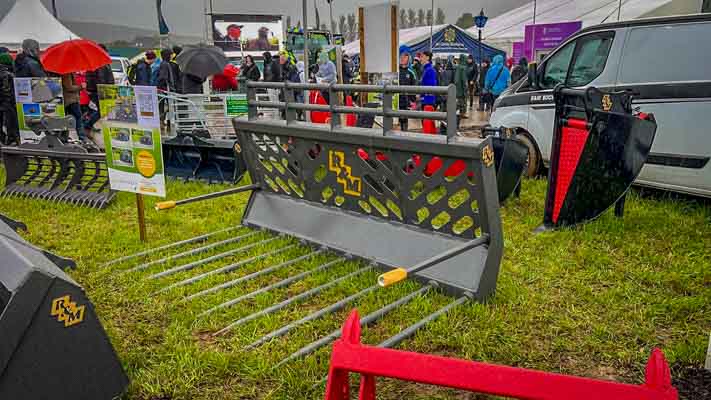Email: info@rmbuckets.com

Introduction to the Silage Fork
In agriculture, efficient handling of forage and silage is crucial, especially during the silage season. One indispensable tool that came to the rescue of farmers during this time was the silage fork. In this blog, we’ll explore the significance, uses, and role of silage forks in the farming industry. We’ll also discuss details related to silage, including when the season in Ireland occurs, how many silage bales per acre are typically produced, and where to find large silage forks for sale.

What is a Silage or Grass Fork Used For?
A silage fork is a specialised piece of farm equipment designed to handle efficiently and transport silage, hay, or other forage materials. Silage is a type of preserved forage made from green crops like grass or maise, which are chopped, compacted, and fermented in a silo to be used as livestock feed. Silage forks are essential tools for the following tasks:
1. Loading Silage into Feeding Equipment:
Silage forks are primarily used to load silage from storage areas such as silos or stacks into feeding equipment, like silage wagons or bale feeders. This process ensures a steady supply of nutritious feed for livestock.
2. Handling and Transporting Bales:
Apart from loose silage, silage forks are also helpful in handling and transporting bales of haylage or silage. This is especially important when bales must be moved within the farm or loaded onto trailers for transport.
3. Packing a Silage Pit:
One of the primary uses of a silage fork is to fill and pack the silage pit after it has been harvested. This is an essential and sometimes dangerous job as the loader could be in danger of tipping.

When is the Silage Season in Ireland?
In Ireland, the silage season typically occurs during the late spring and early summer months, from late May to early July. This timing allows farmers to take advantage of the rapid growth of grass and other forage crops during the warmer and wetter months. However, the exact timing of the silage season can vary depending on local weather conditions and the specific type of forage being harvested.
How Many Silage Bales per Acre?
The number of silage bales produced per acre can vary widely depending on factors such as crop type, yield, and bale size. A well-managed grass field in Ireland can yield around 60 to 80 bales per acre. However, this number can be significantly higher or lower depending on various factors, including weather conditions and farming practices.

Silage Fork for Sale
Several options are available if you’re a farmer or a farm equipment enthusiast looking to purchase a silage fork. You can find silage forks for sale at agricultural equipment dealerships, online marketplaces, and farm supply stores. When choosing a silage fork, consider size, material, and compatibility with your existing equipment. Selecting a high-quality silage fork that suits your specific needs is essential to ensure efficient and safe silage handling.

Conclusion
In agriculture, the silage or grass fork plays a vital role during the silage season. It facilitates the efficient handling, loading, and transport of silage, ensuring that livestock receive the nutritious feed they need. In Ireland, the silage season typically falls in late spring and early summer, with varying bale yields per acre. To acquire a silage fork, explore options at agricultural equipment dealerships, online platforms, or farm supply stores. By harnessing the power of this essential tool, farmers can optimise their forage management and contribute to the health and productivity of their livestock.
For more details on a R&M Buckets Silage Fork
Email: info@rmbuckets.com
Tel: 041 98 20800



